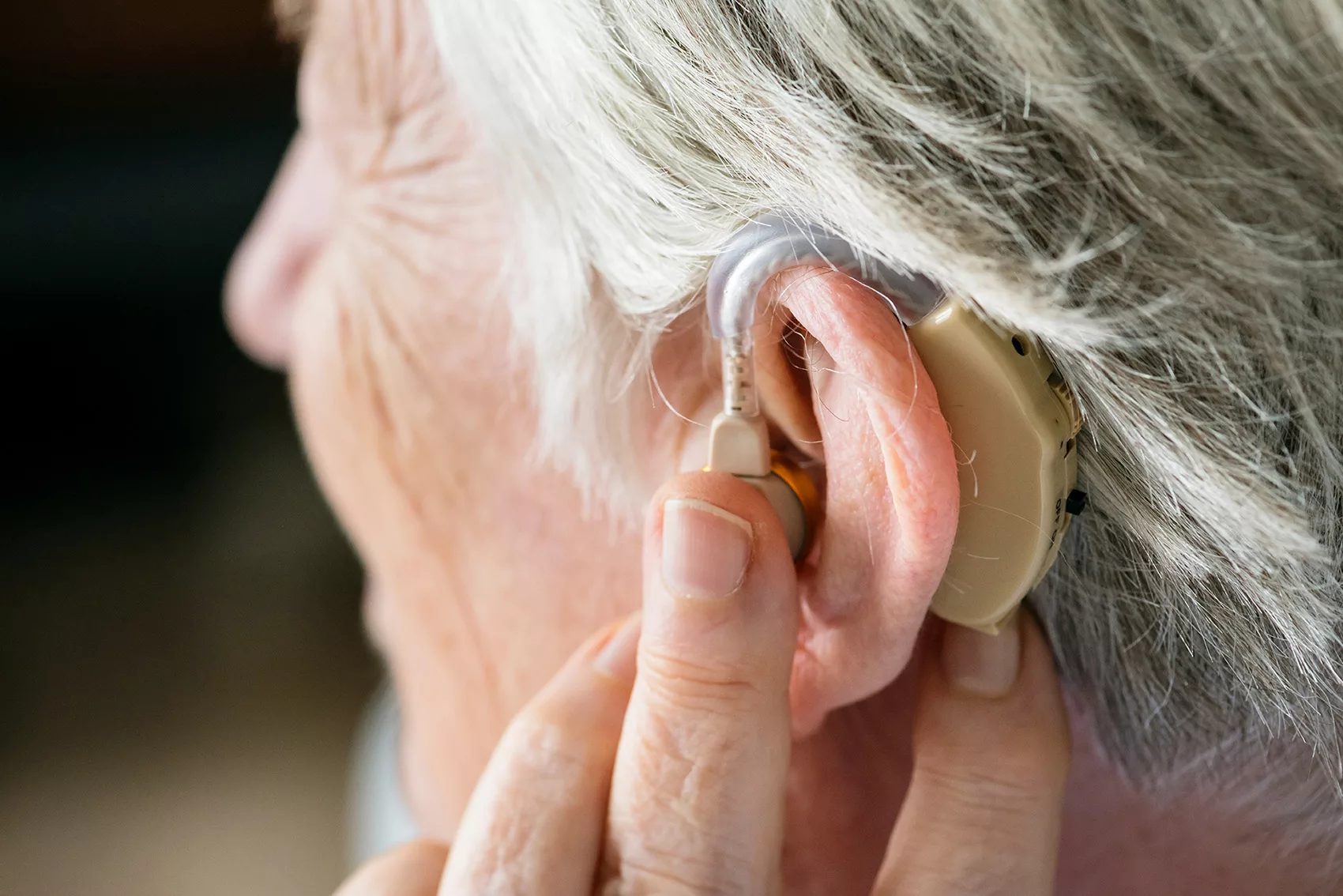Hearing loss accounts for 8% of global dementia cases, rendering it the largest modifiable risk factor for dementia at a population level.
However, there are few nationally representative estimates of the association between hearing loss and dementia among older adults in the US. Previous estimates were vulnerable to selection bias and typically used self-reported data, which may underestimate hearing and dementia and not reflect the true association on a national scale.
In addition, hearing aid use may potentially lower dementia risk among older adults with hearing loss, but evidence is limited and mixed.
We estimated the cross-sectional association of audiometric hearing loss and hearing aid use with dementia among community-dwelling older adults using a nationally representative data set of US Medicare beneficiaries.
Data come from community-dwelling participants (nursing home/residential care residents were excluded [no cognitive data]) of Round 11 (2021; 94% response rate) of the National Health and Aging Trends Study (NHATS), a nationally representative, continuous panel study of US Medicare beneficiaries older than 65 years. NHATS is a probability-based sample with oversampling by age (≥90 years) and race (Black individuals). Since 2011, data were collected annually via in-home interviews with sample replenishment in 2015.
Air-conduction pure tone audiometry used an electronic tablet-based portable audiometer (Shoebox Ltd). A speech-frequency pure tone average (PTA) in the better-hearing ear was calculated as the mean of 4 frequencies (500, 1000, 2000, and 4000 Hz) most important for speech understanding. The PTA was modeled continuously and categorically (normal: ≤25 dB; mild: 26-40 dB; and moderate/severe: >40 dB).
Hearing aid use was self-reported. The NHATS algorithm classifies participants as having dementia if they scored less than or equal to 1.5 SDs from the mean of self-respondents in 1 or more cognitive domain (memory, orientation, executive function), had a self- or proxy-reported dementia diagnosis, or had an AD8 Dementia Screening Interview score indicating probable dementia.
Covariates included age, sex, education, race and ethnicity, history of smoking, and number of chronic conditions (diabetes, hypertension, stroke, myocardial infarction, heart disease, lung disease, or cancer).
Poisson regression adjusted for demographic and clinical covariates estimated dementia prevalence ratios. Secondary analysis investigated hearing aid use and dementia among participants with moderate to severe hearing loss.
Analyses were weighted and conducted using Stata version 17 with a 2-sided P ≤ .05 considered statistically significant.
The Johns Hopkins University institutional review board approved this study. Written informed consent was obtained from all study participants by NHATS investigators.
Among 2413 participants, 1285 (53.3%) were aged 80 years or older and 1347 (55.8%) were female; 453 (18.8%) were non-Hispanic Black, 110 (4.5%) were Hispanic, and 1790 (74.2%) were non-Hispanic White. The weighted prevalence of dementia was 10.27% (95% CI, 8.90%-11.83%) and increased with increasing severity of hearing loss (normal: 6.19% [95% CI, 4.31%-8.80%]; mild: 8.93% [95% CI, 6.99%-11.34%]; moderate/severe: 16.52% [95% CI, 13.81%-19.64%]). Weighted hearing loss prevalence was 36.74% (95% CI, 34.67%-38.86%) for mild and 29.79% (95% CI, 27.47%-32.22%) for moderate to severe hearing loss. Participants with moderate to severe hearing loss were more likely to be older, male, and White and to have lower education levels compared with participants with mild hearing loss or normal hearing (Table 1).
Dementia prevalence among participants with moderate to severe hearing loss was higher than prevalence among participants with normal hearing (prevalence ratio, 1.61 [95% CI, 1.09-2.38]) (Table 2).
This association was consistent with analyses modeling PTA continuously (per 10-dB worse hearing loss) (prevalence ratio, 1.16 [95% CI, 1.07-1.26]). Among 853 participants with moderate to severe hearing loss, hearing aid use (n = 414) was associated with lower prevalence of dementia compared with no hearing aid use (prevalence ratio, 0.68 [95% CI, 0.47-1.00]) (Table 2).
In a nationally representative sample of older adults in the US, moderate to severe hearing loss was associated with higher prevalence of dementia compared with normal hearing.
Hearing aid use was associated with lower dementia prevalence, supporting public health action to improve hearing care access, including increased availability of affordable hearing aids (Over the Counter Hearing Aid Act [HR 2430, §934]) and Medicare provision of hearing aids and rehabilitation services.
Study limitations include the cross-sectional study design and exclusion of nursing home/residential care residents. Mediation analyses to characterize mechanisms underlying the association and randomized trials to determine the effects of hearing interventions on reducing dementia risk are needed.
Alison R. Huang, PhD1; Kening Jiang, MHS1; Frank R. Lin, MD, PhD1; et al






